Sophia Holness: An Intrepid Woman, from a British Workhouse to Canada (1850–1922)
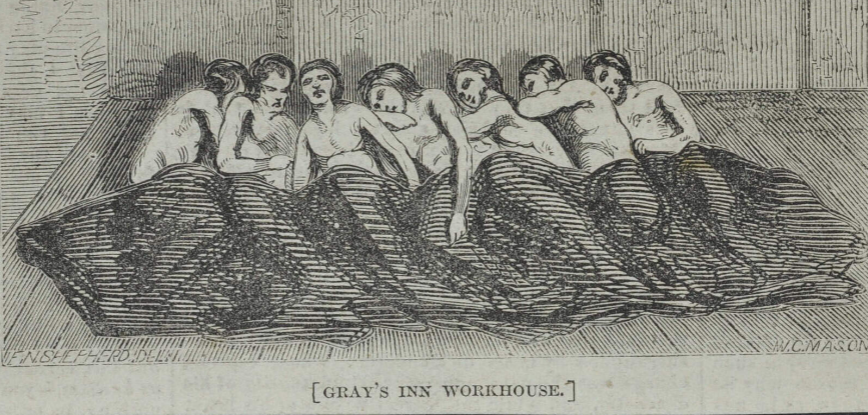
Here is another fascinating story of a real person whose story had been lost until now. Sophia is unrelated to me; she is the ancestor of a client.
Born on June 2, 1850, in Blean, a village in Canterbury, Kent, England, Sophia Holness lived a long, eventful life.
The civil parish of Blean was heavily wooded, filled with ancient trees. The name of the village derives from the old English word “blea”, meaning rough ground and given the course of Sophia’s life, the descriptor of the town is oddly fitting.
The main church of the village was that of “St. Cosmus and St. Damian in the Rough Ground” (the saints were two Arab physicians and early Christian martyrs), built in 1233.
Blean was also the location of a large workhouse, which Sophia would certainly have seen in her childhood. There is only census data from 1881 for this institution which shows a population of 154 individuals. Interestingly, there was a Frederick Holness, age 18 (therefore born around 1863) residing there; he is listed as a “pauper” and a labourer from Chislet, Kent. Another resident was William Holness, a 61-year-old pauper and labourer, also from Chislet.
Sophia’s parents were Ambrose Holness (born February 19, 1817, in Blean) and Emily Jane Packman (born between 1815 and 1816 in Luddenham, Kent). The couple were married on Christmas Day, 1834 in Harbledown, Kent.
Ambrose was a farmer and labourer. He and Emily had 13 children together, with Sophia being the ninth child, with seven brothers and five sisters. It would appear that all the children lived into adulthood, except for two boys named Alfred, one dying at the age of three, and the other at the age of nine, both before Sophia was born.
Ambrose appears in the census records of 1861, 1871, 1881 and 1891 as living in Tyler Hill, where his occupation is given as that of an agricultural labourer. However, he was listed as a “woodman” on the 1867 marriage certificate of his daughter, Frances Ann. He died in Blean in the winter of 1904 at 87 years of age.
Sophia’s mother, Emily, was born in Luddenham, and died in June 1893, aged about 78. After marrying at about 19 years of age, she bore Ambrose 13 children between 1835 and 1860. As most were born about two to three years apart, she was almost continuously pregnant for 25 years of her adult life.
Sophia first appears in the official records in the census of 1851 as a one-year-old infant.
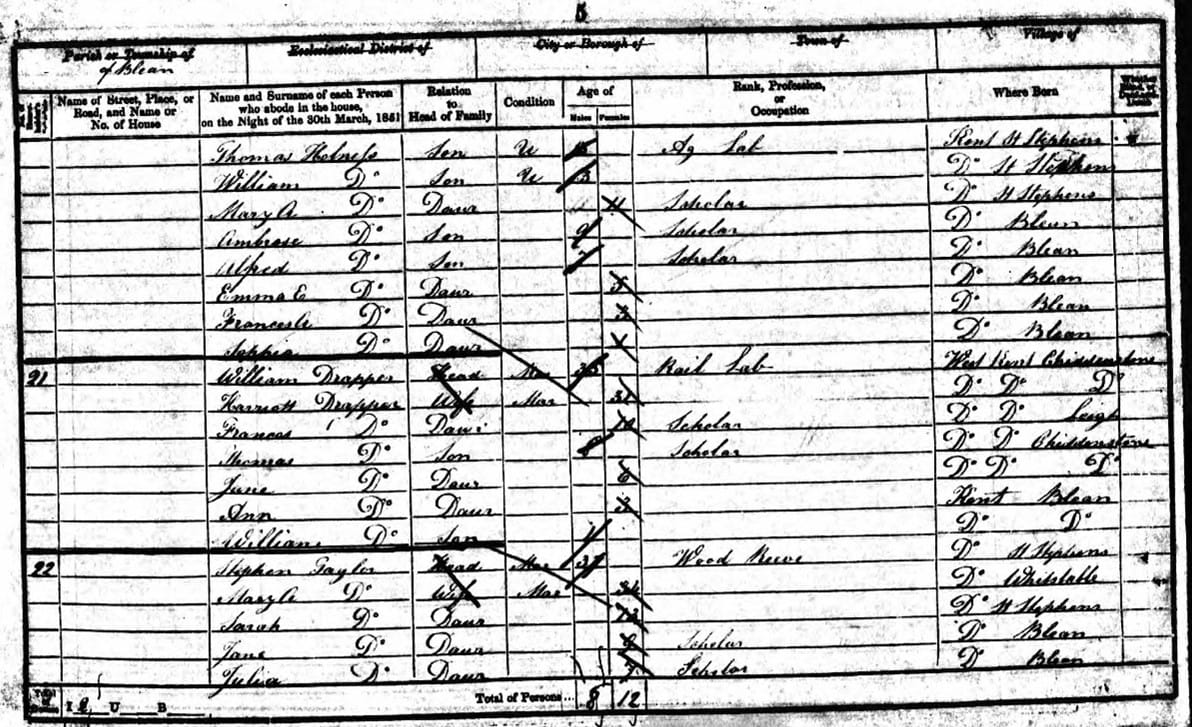
She next appears in the official records at age eleven on April 7, 1861. She was living with her widowed grandmother, Mary Holness (née Atwood), at St. Nicholas Hospital, an almshouse in Harbledown, Kent. Founded as a home for lepers, St. Nicholas Hospital (and Church), was an ancient structure dating from 1084, which later operated as an almshouse.
Grandmother Mary died eight years after she entered into the almshouse records of 1861. There is no information on whether Sophia stayed there with her grandmother until that time.
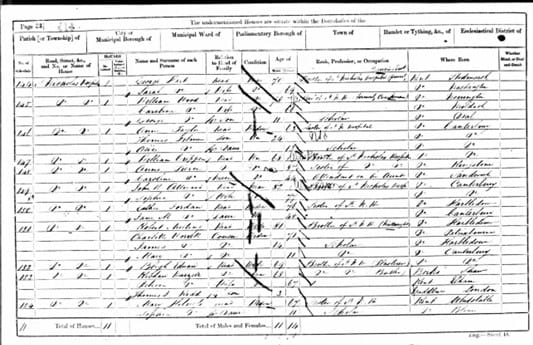
All Sophia’s siblings who reached adulthood ended up marrying, lived mostly in Kent, and had many children. They all appear to have kept in contact with their parents. In fact, Sophia’s sister, Elizabeth Caroline, was later to have her father Ambrose move in with her family when he was much older.
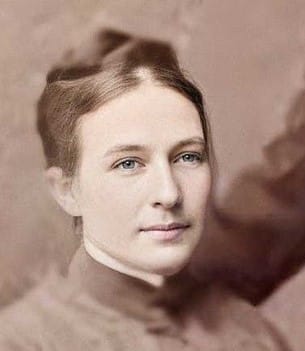
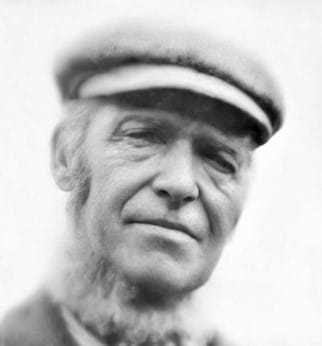

Over the course of about 20 years, Sophia’s circumstances took a turn for the worse. In October of 1880, there was an "Order of Removal" for Sophia Holness and her two illegitimate children to the Guardian of the Poor at Bridge in Kent.
The two children mentioned would have been five-year-old Ada Florence, born 17 October, 1876, in Canterbury, and two-year-old Alfred Patrick, born sometime in 1878. Alfred Patrick did not live much longer, dying on January 18, 1888, at about ten years of age in Canterbury.
Assuming that Ada is indeed Sophia’s first child, she would have become a new mother at 26 years old. The father of the children is unknown, although Sophia herself variously referred to him as Alfred or Albert or Albert George Holness. He could have been an uncle or a cousin, but there little chance of uncovering the truth now.
Or did she just randomly pick a “common” family name and was the father unrelated to her in any way? Had she any previous pregnancies in her teenage years or early twenties? Might that explain why she appears to have been shunned by her family? Was she even shunned at all, or was it her choice to live a life at the edge?
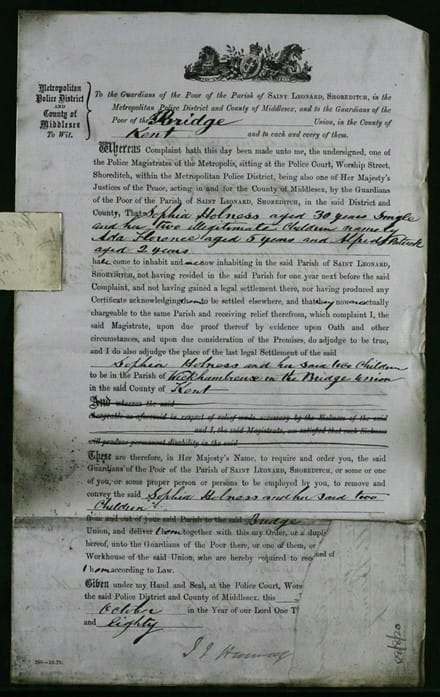
In 1881 Sophia was admitted to the Holborn City Road Workhouse from the January 19–24. She was there with Ada (here indicated as born in 1875) and Alfred (born in 1878). Of note is that Sophia was released on the January 24 to or by someone named “S. Thakes” (?), whereas the two children were released earlier — on January 21 to or by “Mitcham”.
Sophia, at her own request, spent that time in the workhouse. Such a request was not unusual for the time. As opposed to the Dickensian image of workhouses in England, by the 1880s there had been considerable reforms to the Poor Laws. Inmates consigned themselves of their own free will, often as a remedy to lack of housing, lack of money, lack of food and heat. Not completely dissimilar to shelters nowadays, those wishing to stay there would register and be allowed to stay for only a certain amount of time. What was different is that in Sophia’s time those who went into the workhouse were expected to work to earn their keep. Women typically were engaged in laundry, sewing, cooking, nursing, housekeeping, and so on.
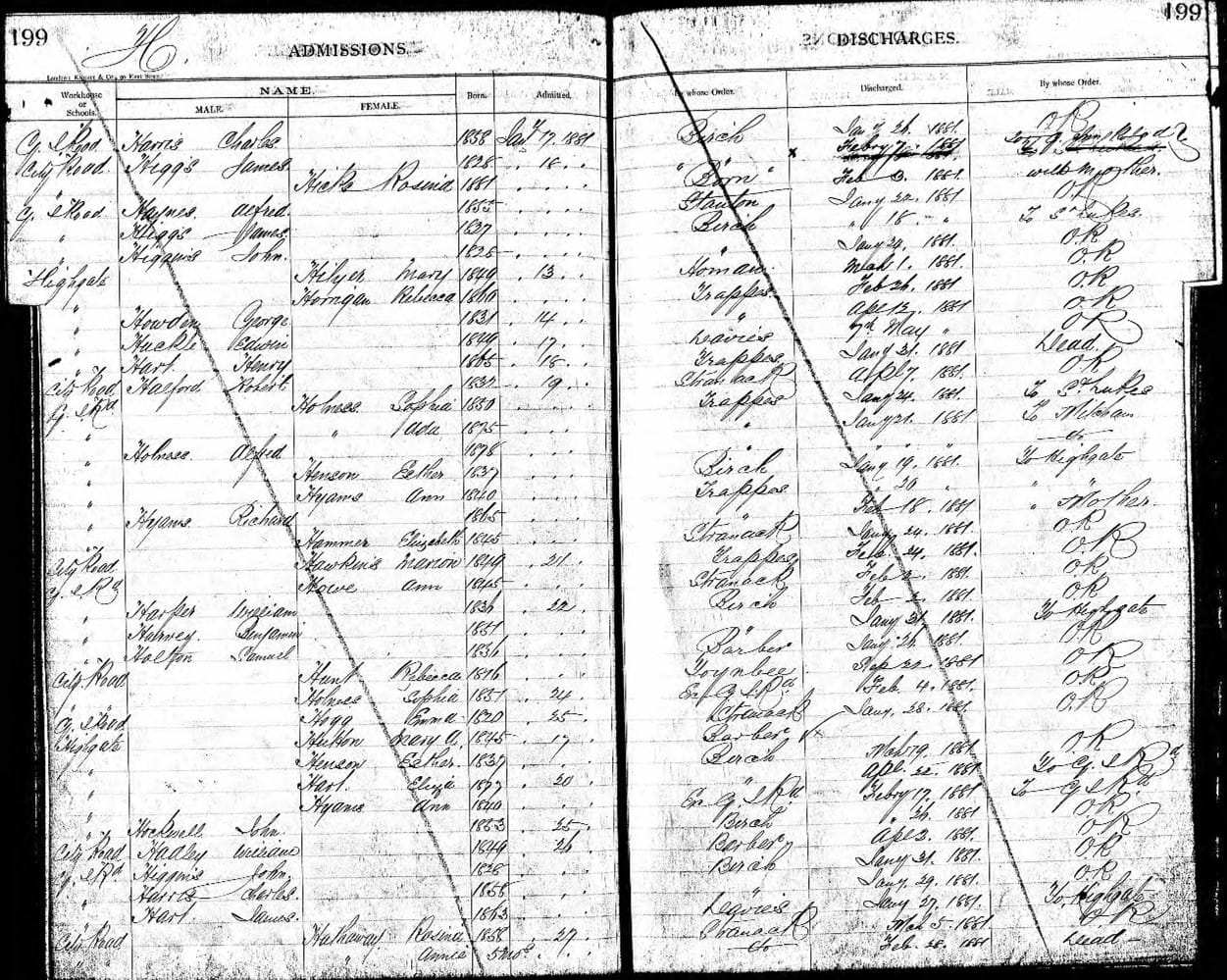
Sophia later returned in February to the associated Holborn Union Workhouse Shepherdess Walk. While there she gave birth to another daughter, Maggie Lillian, with the assistance of a 40-year-old widow midwife named Elizabeth Jane Talbot. It would also appear that neither Ada nor Alfred were with her. There is a vague hint in some documentation that Arthur Pont may have been the father. Pont was the husband of Sophia’s sister Elizabeth.
Assigned to the laundry, Sophia was placed under the supervision of the chief laundress, a 41-year-old Scottish widow named Jessie Proudfoot.
The total number 1290 persons resided at this institution during Sophia’s stay, including several “officers”. In the laundry, she worked with many other women, among whom she would have been one of the youngest. The most junior woman was a 21-year-old, and the eldest was 81 years of age. There were three women in their 20s, four in their 30s, and three in their 50s. The majority were much older women — thirteen in their 60s, eighteen in their 70s, and five in their 80s. These, then, were her companions during some of the most important times of her life.
After this point, documentation mentioning Sophia becomes thin. Her next official appearance was in the 1901 census. She was now the “head” of her household, living in Oare St. Peters, Kent, residing at “Nutshell Cottage” with her 16-year-old son, Albert George Ernest, born April 26, 1884, in Ramsgate Kent. He was then working with cattle on a farm. Sophia called herself a “widow”, although it is quite improbable that she was ever married. It is also unlikely that her children had the same father.
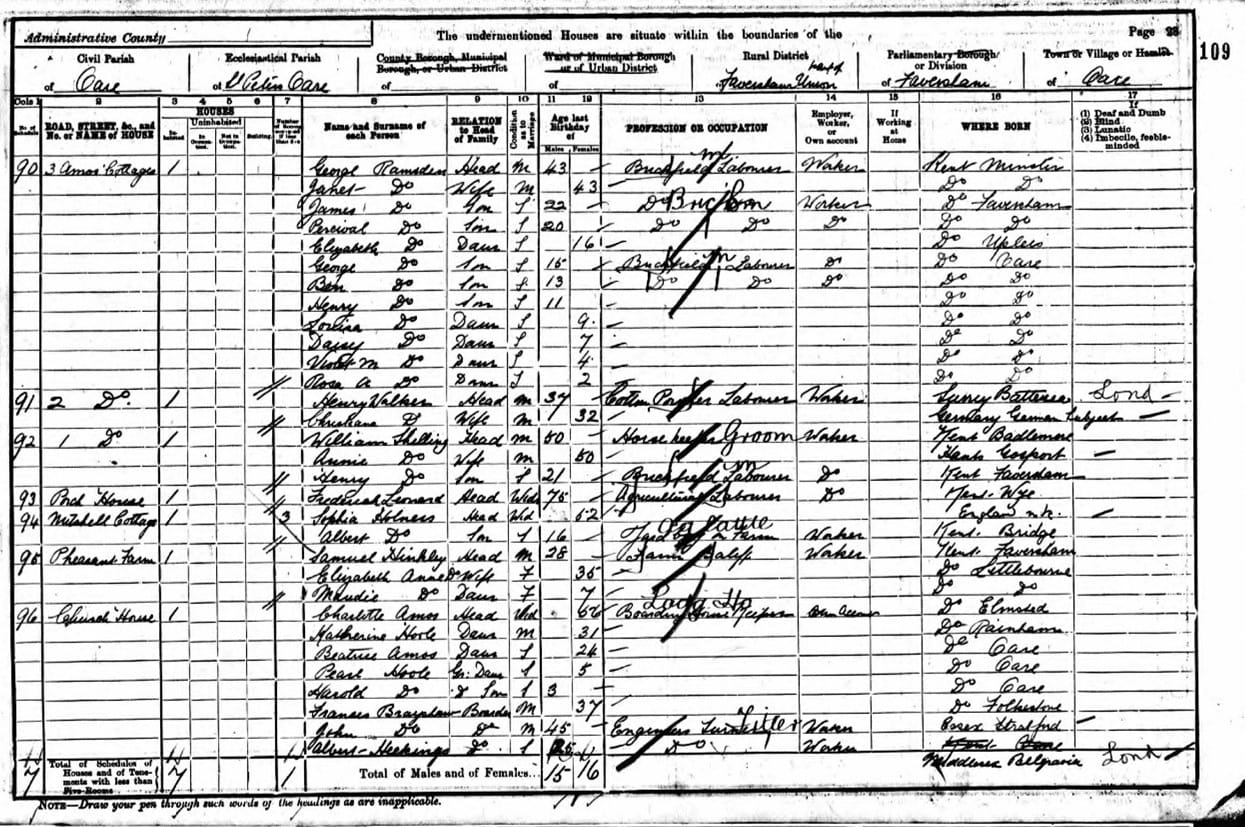
Sophia did not remain much longer in England. On August 28, 1908, Sophia, along with her daughter Ada Florence, set sail from Liverpool on board the SS Victorian (a ship of the Allen Line), destined for Quebec City and Montreal. She was travelling unaccompanied (i.e., without a spouse), yet called herself a “wife”. In addition to her daughter, she also brought two other children with her, Lester Harris and Stella (Harris?). They arrived in Quebec on September 4, 1908.
Imagine Sophia’s emotions. She likely knew that she would never see England again. Was she relieved or sad, or a little of both? Did she look back at her homeland as the ship was sailing away, and did her gaze linger until England disappeared from the horizon? Or was she facing her new world with excitement and determination?
Picture her arrival in Quebec in the autumn. The leaves would have started to turn and, shortly thereafter, she would see her first true Canadian fall with red sugar maples blazing. Later she would experience her first Canadian winter. Although England can be cold and damp, she must have been astonished at the depth of the temperatures in Canada, and that of the snow.
Returning to her charges, Lester was none other than the son of her workhouse-born daughter Maggie. His full name is Lester Charles Baden Harris, born in England in 1900 to Charles John Harris, husband to Maggie. However, the ship’s passenger manifest indicates that Lester’s mother was Sophia Holness and that he was going to Toronto.
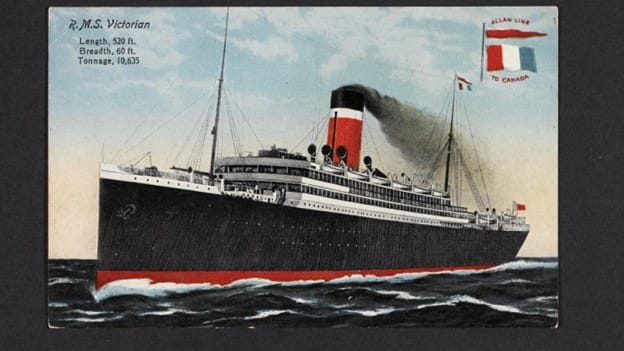
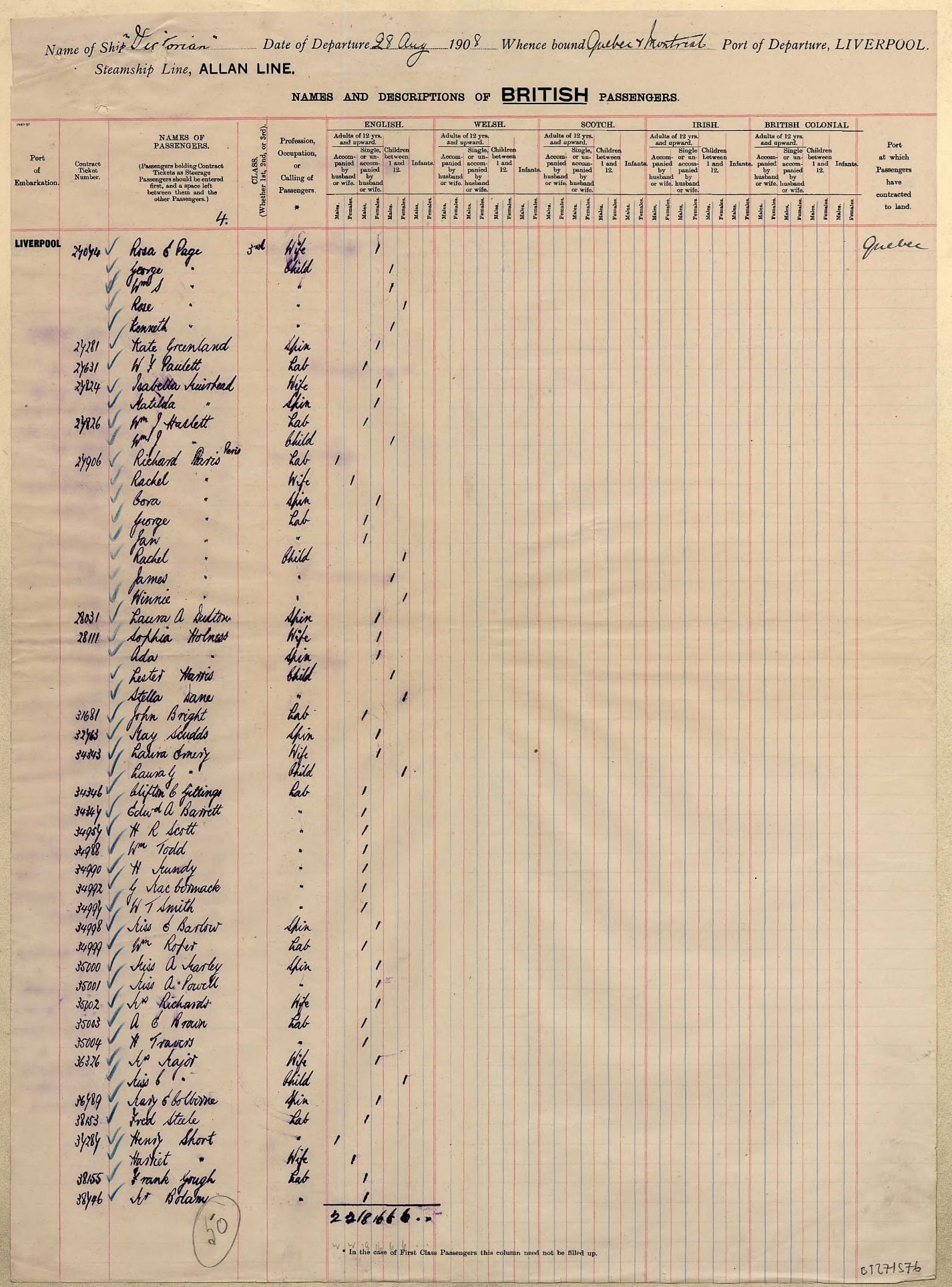
Sophia’s son, Albert George, had emigrated to Canada in the previous year, 1907. Her daughter, Ada, had been working in 1901 as a live-in servant for an elderly couple, James and Hannah Payne, at 9 King Street in the St. Alphage district of Canterbury. Afterwards, Ada joined her mother in emigrating to Canada (her story continues in another narrative).
Her daughter Maggie had married a man named Charles Harris. In addition to Lester, she had a son named Clifford Albert John Harris, born in England in 1902 and who died in Barrie, Ontario in 1987. Tragically, Maggie’s husband died by committing suicide at age 71 on February 13, 1948. He jumped off a bridge, fractured his skull, and was buried in Etobicoke Ontario.
Albert George enlisted in Toronto with the Canadian Expeditionary Forces during World War I. His entrance examination notes that he was 5’6-1/2” tall, his chest measured 39 inches when fully expanded (with a 5” expansion!), his eyes were brown, his hair and complexion were both “dark”. Given that Sophia’s family was quite fair, this suggests that Albert’s father was not a Holness relative.
Military records named his mother Sophia as his closest relative, and that they were living at 37 French Avenue in Toronto. This address is not to be confused with the Scarborough location. Sophia would have been living in the French Avenue of the Junction area of West Toronto.
In 1911, Sophia made another brief appearance in the records. Although she was likely not present, her name is given as the mother of the bride, Ada, who was married in Collingwood Ontario on July 7 to a widower named Neil Young. Ada gave her father’s name as Alfred Holness, and her mother as Sophia “Hornby”. Perhaps the clerk wrote the name incorrectly, or perhaps Ada was shielding the details of her illegitimacy. In addition to the maiden name of “Hornby”, there are some mentions in other records of “Harman” as an alternative surname.
Sophia never returned to England. At the age of 71, on March 2nd, 1922, she died in Toronto. Her last address was 3243 Dundas St. West where she had been living with Albert. The cause of death was given as angina pectoris and arteriosclerosis.
The funeral home was located just down the street at number 2926 Dundas and she was buried two days later at Prospect Cemetery, 1450 St. Clair Ave W., Toronto (Adult Single Grave 22 95).
Would you like to read other posts? If so, please click the Home Page link below:

You, Dear Reader, are much needed and appreciated.
Everything written requires a reader to make it whole. The writer begins, then you, dear reader, take in the idea and its image, and so become the continuation of its breath. Please subscribe so that my words can breathe. Consider this my hand, reaching out to yours.
